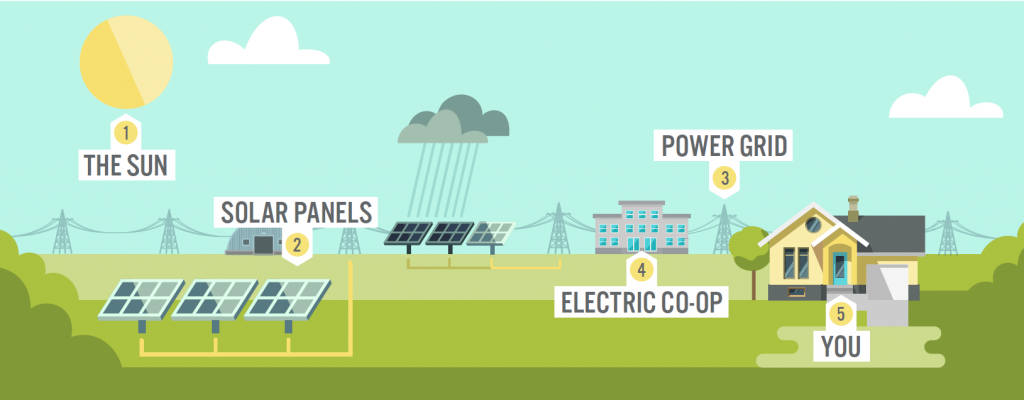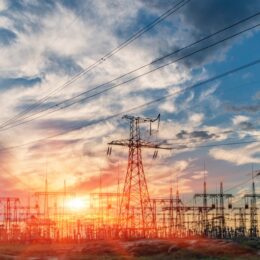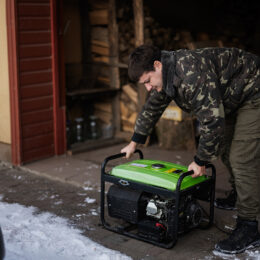By Jake Taylor
A beaming summer sun is increasingly cooling people’s homes, washing their clothes, and even freezing their ice cubes.
When many people think about solar energy, they picture solar panels installed on home rooftops. Fortunately, new opportunities to invest in renewable energy have emerged for those in participating communities.
In community solar programs, a central organization installs, owns, and maintains solar arrays, which are large groups of solar panels that are joined together to produce electricity. Participants in a community solar program then purchase a portion of the electricity generated by the arrays, which are directly connected to the energy grid. The solar energy then flows into the grid and joins all of the electricity produced to power homes, farms, schools, and businesses.
Community solar programs allow businesses, renters, and a variety of people and organizations who cannot put panels on their property the ability to participate in solar energy. Homeowners who have a lot of shade on their property or who cannot afford the upfront cost of panels also now have another option. Community solar participants are supporting the development of renewable energy resources. By doing so, they are helping reduce our dependence on fossil fuels.
How Community Solar Programs Work

- The Sun is a Big Power Plant. It’s making energy all the time, and beaming that energy at the Earth in the form of light.
- Solar Panels Turn Light Into Electricity. When light hits most objects — your skin, for example — it turns into heat. But solar panels turn the light into electricity we can use — exactly like electricity from any other source.
- The Electricity Flows into the Power Grid. The solar panels are directly connected to the same utility power grid that serves your home or business today.
- Your Electric Co-op Works with Organizations that Produce Electricity. The organization operating the community solar program installs, owns, and operates the array. Some local electric co-ops may even participate in a community solar program offered to members. Many more co-ops have renewable energy resources, such as wind, solar, or landfill gas, as part of the fuel mix generating electricity they supply to their members.
- Your Community. The electricity produced by community solar arrays mixes with all of the other electricity in the energy grid and is delivered to your community. Participants in community solar programs help reduce our dependence on fossil fuels, which benefits the environment.
JAKE TAYLOR is the energy advisor at LaGrange County REMC in LaGrange, Indiana.



